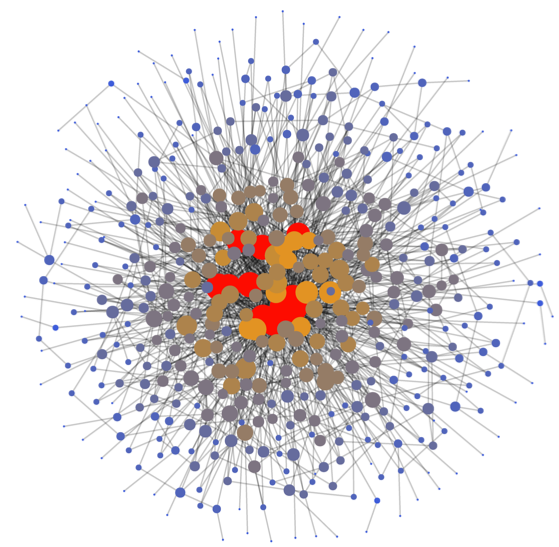Probing the robustness of nested multi-layer networks
Giona Casiraghi, Antonios Garas and Frank Schweitzer
(2019)
Research: Resilience
Abstract
We consider a multi-layer network with two layers, $_1$, $_2$. Their intra-layer topology shows a scale-free degree distribution and a core-periphery structure. A nested structure describes the inter-layer topology, i.e., some nodes from $_1$, the generalists, have many links to nodes in $_2$, specialists only have a few. This structure is verified by analyzing two empirical networks from ecology and economics. To probe the robustness of the multi-layer network, we remove nodes from $_1$ with their inter-and intra-layer links and measure the impact on the size of the largest connected component, $F_2$, in $_2$, which we take as a robustness measure. We test different attack scenarios by preferably removing peripheral or core nodes. We also vary the intra-layer coupling between generalists and specialists, to study their impact on the robustness of the multi-layer network. We find that some combinations of attack scenario and intra-layer coupling lead to very low robustness values, whereas others demonstrate high robustness of the multi-layer network because of the intra-layer links. Our results shed new light on the robustness of bipartite networks, which consider only inter-layer, but no intra-layer links.

